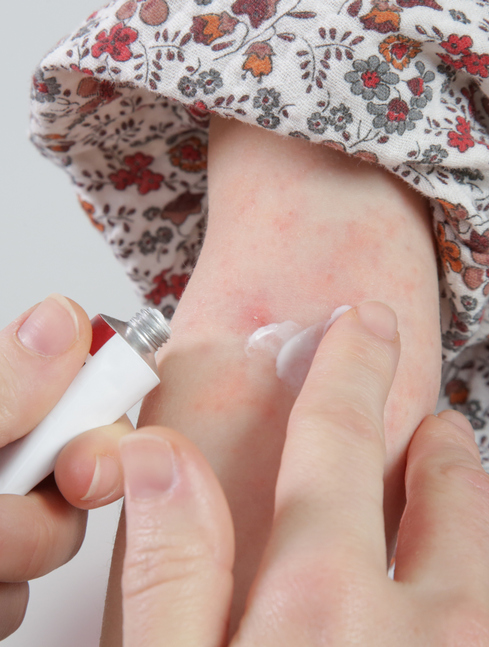
Atopic Dermatitis
Celfex is a topical lotion currently in Phase 2 clinical development for treatment of mild and moderate Atopic Dermatitis, also called Eczema.
Celfex is targeted for short and long term eczema monotherapy (‘soothe & prevent’ for children (6 months) to adults. Celfex is a topical lotion formulated with fexofenadine, a drug known for its antihistamine properties. It has recently been shown to have new anti-inflammatory actions. It modulates key inflammatory mediators IL-1β, IL-4, IL-5, IL-13, IL-31, and IFNγ.
Celfex is aimed at itch relief, inflammation control, suppression of bacterial imbalance, moisture retention, upregulation of antimicrobial peptides, and skin barrier restoration. In this strategy, Celfex targets the main pathological pillars of eczema.
Atopic Dermatitis market is growing globally and there is demand for cost effective and efficacious solutions.
Unmet needs include: patient therapy compliance, a shortfall of therapeutic options, improved long-term disease control, and few tolerable topical treatment options. Children are 75% of the target population group – they tend to be more vulnerable to adverse drug reactions such as skin discomfort. Celfex represents a significant opportunity to capture a share of this multi billion-dollar global market. Celfex lotion is targeting to be tolerable, effective and lower cost.
Celfex is targeted for short and long term eczema monotherapy (‘soothe & prevent’ for children (6 months) to adults. Celfex is a topical lotion formulated with fexofenadine, a drug known for its antihistamine properties. It has recently been shown to have new anti-inflammatory actions. It modulates key inflammatory mediators IL-1β, IL-4, IL-5, IL-13, IL-31, and IFNγ.
Celfex is aimed at itch relief, inflammation control, suppression of bacterial imbalance, moisture retention, upregulation of antimicrobial peptides, and skin barrier restoration. In this strategy, Celfex targets the main pathological pillars of eczema.
Atopic Dermatitis market is growing globally and there is demand for cost effective and efficacious solutions.
Unmet needs include: patient therapy compliance, a shortfall of therapeutic options, improved long-term disease control, and few tolerable topical treatment options. Children are 75% of the target population group – they tend to be more vulnerable to adverse drug reactions such as skin discomfort. Celfex represents a significant opportunity to capture a share of this multi billion-dollar global market. Celfex lotion is targeting to be tolerable, effective and lower cost.

